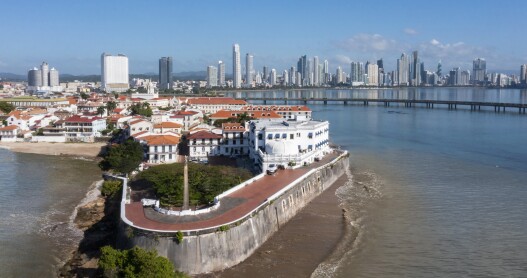Overview
When’s the best time to go to Panama?
Panama isn’t subject to the standard four seasons, just a rainy period from May to November—characterized by merciless sun and sudden downpours—plus a dry season from December to April. The best time to visit is in December and January, when the weather transitions through both periods and cold fronts from further north sweep across the Caribbean Basin, meaning cool breezes caress the Central American isthmus.
How to get around Panama
By air, Panama City is one of the Western Hemisphere’s best-connected spots. There are “tourist taxis” that connect Tocumen International Airport with downtown Panama City. Cars are available for rental, as are Uber and Cabify rides. Good public transport from Tocumen is lacking but the Metro’s Línea 2 (part of the first subway in Central America) seeks to solve that problem starting in 2019. Buses—both in town and heading toward the suburbs and the countryside—are reliable if not perfectly comfortable. Domestic flights connect Panama City to other tourism destinations in the country like Bocas del Toro, David, Chitré, San Blas, and Darién.
Can’t miss things to do in Panama
Without a doubt, the Panama Canal is an absolute must-do on any trip to the country. This engineering feat was, is, and will continue to be a key factor in the role Panama plays on the world stage, as well as in the profile of its people and culture. The rain forest is also a mandatory stop, especially because you can get there so easily from the capital. As its geography might suggest, the Isthmus of Panama is a bottleneck where a great deal of all tropical biodiversity comes together, lives together, and fuses.
Food and drink to try in Panama
Cultural diversity is Panamanian cooking’s forte. From earliest childhood, for example, the people of Panama lap up Chinese culinary traditions alongside Africa-derived cuisines. That said, if you’re looking try something from the country’s traditional menu—something simple, tasty, and hearty—ask for the chicken soup called sancocho, arroz con pollo, or a tamale (they come in the style you’ll recognize and also in casserole form)…and that’s just a handful of essential favorites. As for drinks, the spirit known as aguardiente seco (no relation to the anise-flavored liquor enjoyed in Colombia) as well as rum, are the typical choices. A 10% tip is customary in restaurants. Any sort of obligatory service or set-up fees, as may be the practice in other countries, are against the law in Panama and you should refuse to pay them.
Culture in Panama
The people of Panama take pride in their traditions and history and, above all, their struggles for full territorial sovereignty, a goal finally achieved in 1999. The nation prides itself on its raucous nightlife, and pub crawls called arranques (not unlike the Spaniards’ marchas) are an institution for locals, especially between Thursday and Sunday nights. Soccer is winning over fans, but baseball still reigns supreme; provincial-town matches make for a colorful study in popular customs and quirks. Not least of all, you can’t understand the culture of Panama without considering Carnaval: though its pageantry and opulence are lesser than what you see in Rio or Barranquilla, its explosion of street-level flirtation and revelry is unknown in other regional countries.
For Families
Panama is an ideal family destination, above all for those who like spending time in the great outdoors. Activities include visiting a plethora of natural areas a short hop from the capital. The Museo de la Biodiversidad as well as the Punta Culebra nature center—operated by the Smithsonian Tropical Research Institute in the Amador region—support interactive activities for explorers of all ages.
Local travel tips for Panama
Panamanians are cordial, but deal with life on their own schedule, so don’t always expect lightning-fast responses to your requests; try to take things easy. Although posted rates exist for taxis, these are disregarded as a matter of course; you’ll need to negotiate fares before getting underway. Your status as a foreigner may tempt a price hike; be ready to say no at first to reach a more reasonable charge. While the weather in Panama is hot, running around too scantily clad is not seen as very good form; in fact, men who ply city streets shirtless may be in for a police hassle. Also expect a vast contrast between outside heat and the gelid temperatures to which most AC systems are adjusted.
Local Resources
Guide Editor
Roberto Quintero is a storyteller and dramatist who has lived in Madrid, Buenos Aires, and now calls Panama City home. Under the stage name Winnie Sitton, he has enjoyed an outrageous stand-up comedy career in Panama that he supplements by writing travel journalism for publications at home and abroad.









